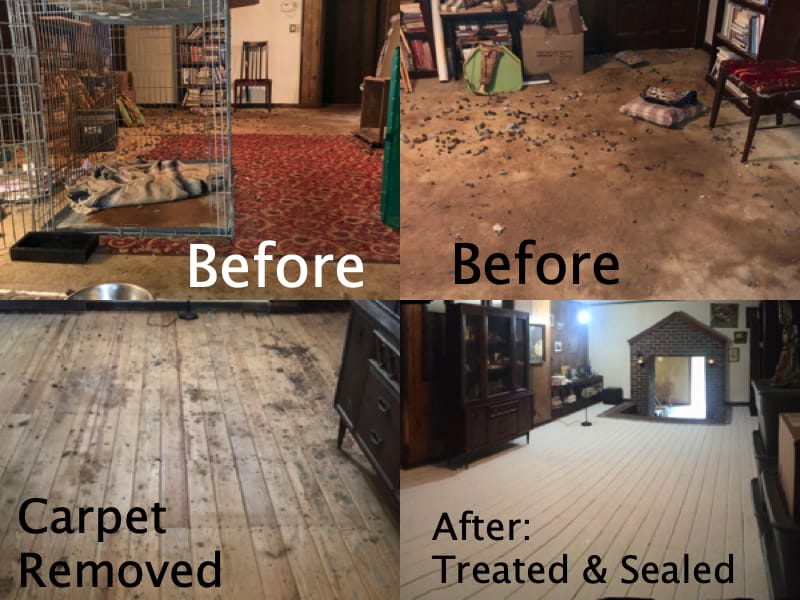
When Carpet Cleaning Isn't Enough
A previous client paid for professional carpet cleaning to remove blood from her carpets. When that didn't work, she hired someone to pour some enzymes on the spots, but the stains kept coming back! Then she called Bio-One.
When she asked us to help her clean some blood off her carpets, we immediately explained to her that from our experience, carpet cleaning is ineffective at removing biohazards. If she wanted to do it right, we would need to remove and replace the carpets. That's when she told me they had already tried two other methods that were ineffective.
So why is carpet cleaning rarely effective at removing biohazards?
Materials
Carpet is made with a synthetic pile and a permeable backing. Chemical disinfection is only effective when the technician can access all the surface area of a substrate. This is not possible with pile or foam. Which leads us to the next reason.
Construction
Carpeted flooring is made of three main parts:
- Carpet
- Pad
- Subfloor
Bodily fluids pass right through the permeable backing of the carpet into the foam pad. The foam pad then holds most of the moisture. If the flow of liquids overcomes the pad's absorption capacity, then the liquid will continue down onto the subfloor, a semi-permeable OSB board in most cases. A heavy volume of fluid can result in the OSB board absorbing those fluids, which will then need to be cut out. Surface contact can sometimes be treated and sealed.
Carpet cleaning just isn't strong enough to reach down all three layers, which is why the surface may appear clean at first but stains reappear through capillary action later.
Useful Life
Another consideration is the useful life of carpet, which as you can see from the chart to the left, is only 8-10 years. We commonly service homes with carpets 10, 20, 30-years old or more. When you have enjoyed that much use out of a carpet, it may be time to put it out to pasture.
Thanks for reading!
Rebecca & Gabriel Montenegro
850-855-6349






